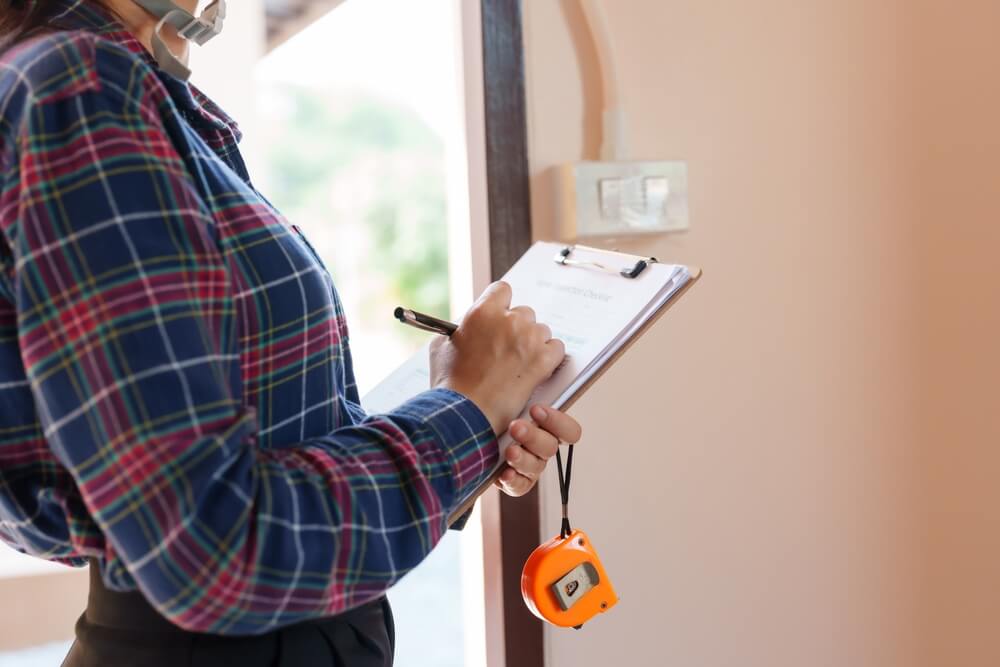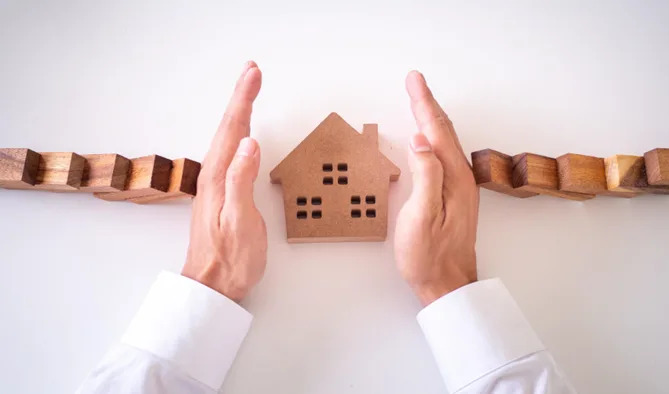A 4-point inspection is a survey that’s often required by insurance carriers for homes that are over 20 years old, and is an important factor in assessing a property’s eligibility for homeowner’s insurance.
Given that older homes may have inherent risks or deficiencies due to their age, insurance companies require a detailed evaluation of four major components:
- Roof
Roofs are checked for wear and tear and leaks—with inspectors assessing each roof’s expected lifespan. This is vital as a compromised roof can lead to major issues further down the line.
- Electrical systems
Electrical systems are inspected to make sure safety standards are met and that fire hazards are minimized.
- Plumbing
Plumbing systems are assessed for leaks, corrosion, or outdated materials that might cause water damage.
- HVAC (heating, ventilation, and air conditioning) systems
HVAC systems are inspected to ensure they operate efficiently and comply with current standards.
Each of these elements plays a major role in the overall safety and habitability of a home, with deficiencies in any one of these areas influencing a home’s insurability.
How to prepare for a 4-Point inspection
When it comes to getting ready for a 4-Point Inspection, homeowners in Florida should gather all the documentation they have that shows when repairs and updates were made to their property. This includes receipts for any work done, permits obtained for major renovations, and maintenance records.
Having these documents readily available is important as they not only help demonstrate the upkeep of a home key systems but also provide inspectors with a comprehensive understanding of the home’s condition. Beyond just having these documents, carefully organizing them helps streamline the inspection process.
In addition to documentation, you should arrange for inspectors to have easy access to all areas of your home. This means clearing paths to utilities, attics, basements, and roofs. Making the inspector’s job simpler results in a quicker and more thorough evaluation, helping homeowners secure the home insurance coverage they need.
Taking these steps not only improves a homeowner’s chances of receiving favorable insurance terms but also demonstrates their commitment to the property’s maintenance and safety.

What happens after the 4-Point inspection? Interpreting the inspection report
When it comes to securing home insurance in Florida, understanding the specific details of your property’s condition is key. The inspection report provides homeowners with a clear and comprehensive summary of the structural integrity of the key components of their home—as well as offering actionable recommendations to help resolve any issues
This clarity helps homeowners identify specific repair needs that need to be addressed to qualify for insurance coverage. By breaking down findings into manageable sections, the report allows homeowners to focus on the most pressing issues that could impact their insurability (and prevent larger, more costly issues down the line), paving the way for a smoother insurance application process.
Professionals often emphasize the importance of thoroughly reviewing these reports, as doing so equips homeowners with the knowledge needed to make informed and prompt decisions regarding necessary repairs. Tackling these issues quickly keeps properties well-protected against Florida’s unique environmental challenges and improves the homeowner’s chances of qualifying for home insurance.
Steps to take if issues are found
When issues are detected during a home inspection, it’s essential for homeowners to take immediate action by consulting certified repair professionals. These experts will have the experience and knowledge needed to accurately assess the concerns highlighted in the report.
Homeowners should obtain detailed quotes for any necessary work as they will provide a clear understanding of the costs involved and the time it will take to rectify any identified issues.
In essence, the inspection report serves as a roadmap, detailing specific problems and their potential impact on the home’s overall safety. Allowing homeowners to understand the severity of each issue, the report helps prioritize repairs based on urgency and budget constraints.
Engaging with certified professionals also provides homeowners with the opportunity to ask questions and seek advice on preventive measures to avoid future complications. This proactive approach not only improves the safety and livability of a home but also contributes to its long-term maintenance and value retention.

How the inspection report affects your home insurance policy
Insurance carriers rely heavily on the results of 4-Point Inspections to validate risk levels associated with insuring a home. For homes that are 20 years old or older, insurers often require this assessment to determine the potential risks involved in offering coverage.
If any of these elements fail to meet standards, an insurance company may refuse to issue a policy until the necessary repairs are made. This requirement highlights the importance of maintaining these systems, as deficiencies can result not only in safety hazards, but in financial risks for the insurer.
Additionally, if deficiencies are noted in the inspection and remain unaddressed, some insurers may opt not to renew an existing homeowner’s policy. This means that preventative maintenance is essential not just for the safety and comfort of living in the home but also for maintaining insurance coverage.
Even if a policy is initially granted, the insurer may impose limitations on coverage if certain repairs or updates are not completed. For instance, they could exclude coverage for specific types of damage until the homeowner rectifies the issues identified in the inspection.
To keep their homes safe, avoid unexpected financial liabilities, and secure ongoing insurance, homeowners should engage in proactive home maintenance, particularly if their home is an older property.
Frequently Asked Questions about 4 Point Inspections in Florida
This section addresses key questions about 4-Point Inspections, clarifying who requires one, how often assessments take place, what steps are involved, and the costs typically involved. The overview offers practical insights for Florida home insurance clients seeking clear, reliable information about maintaining compliance and protecting their assets.
Who needs a 4-Point Inspection?
A 4-Point Inspection is required for property owners seeking home insurance in Florida, particularly for those with older structures or systems that may affect coverage. It plays a key role in confirming that crucial items like the roof, electrical, plumbing, and HVAC systems are in proper condition, ensuring that insurance providers can accurately assess risk based on current assessments. $-Point inspections are especially relevant for homeowners looking to switch insurance carriers or purchase a new home
How often should inspections be done?
We recommend regular evaluations to ensure that the roof, electrical, plumbing, and HVAC systems remain compliant with policy requirements, especially when preparing for a policy rewrite. A proactive approach helps minimize repair costs and provides a clear history for both homeowners and insurers.
What to expect during the inspection process
The inspection process begins with a detailed review of major home systems, focusing on the roof, electrical, plumbing, and HVAC components for home insurance in Florida. The evaluator inspects visibly accessible areas and notes any potential issues, providing homeowners with clear guidance on necessary repairs to secure their policy effectively.
Costs associated with a 4-Point Inspection
Costs for a 4-Point Inspection in Florida are generally moderate (depending on factors such as the size of the home and its location), making it an accessible option for those updating their insurance coverage. Whatever expenses are incurred, they tend to be balanced by the benefits of identifying maintenance needs early, reducing potentially much higher repair costs further down the line.
Conclusion
A 4-Point Inspection for home insurance in Florida provides homeowners with clarity on the condition of key systems such as the roof, electrical, plumbing, and HVAC. It guides property owners in addressing necessary repairs, and supports eligibility with insurance companies.
Even if your home is new construction, a 4-Point Inspection will help lower risks and can reduce potential future repair costs, benefiting both homeowners and insurance companies.
Ultimately, the inspection offers homeowners the insights needed to secure better policy terms and protect their investments more effectively.




